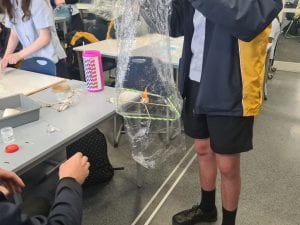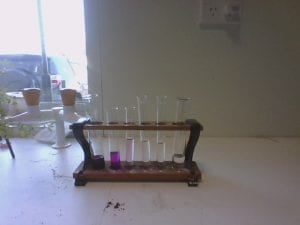Aim:
I want to find out how a hot air balloon works and if I can build my own.
Research:
Method:
Equipment
- Tea candle
- 2xbamboo sticks
- 4x straws
- Medium-sized bin liner
Instructions
- Sharpen the un sharpen part of your bamboo sticks
- Take the Tea candle wax out of the tin.
- Make holes on all the sides of the tin at least 1.5 cm apart.
- Poke the bamboo sticks in the hole making a plus sign
- Stab the straw in the middle with the bamboo sticks. Using all the straws on each side.
- Glue the tin candle onto the sticks in the middle.
- Get a thin layer of plastic, and glue it onto the straws.
Results:

Discussion:
The experiment did not work because it did not fly, it did look like it had air in it but the heat was melting the plastic. How a hot air balloon works is that when you light the fire. It warms up the air inside making it warm, and you know warm air rises which makes the hot air balloon rise too. While the cold air moves down it kinda keeps doing the same thing. But when the hot air balloon goes down, you have the lower the heat so the air in the sky gets cold and eventually the hot air balloon will fall back down slowly. No the only reason why it probably didn’t work is because we used plastic. But hot air balloons use Nylon and Polyester which are stronger and also bigger.



